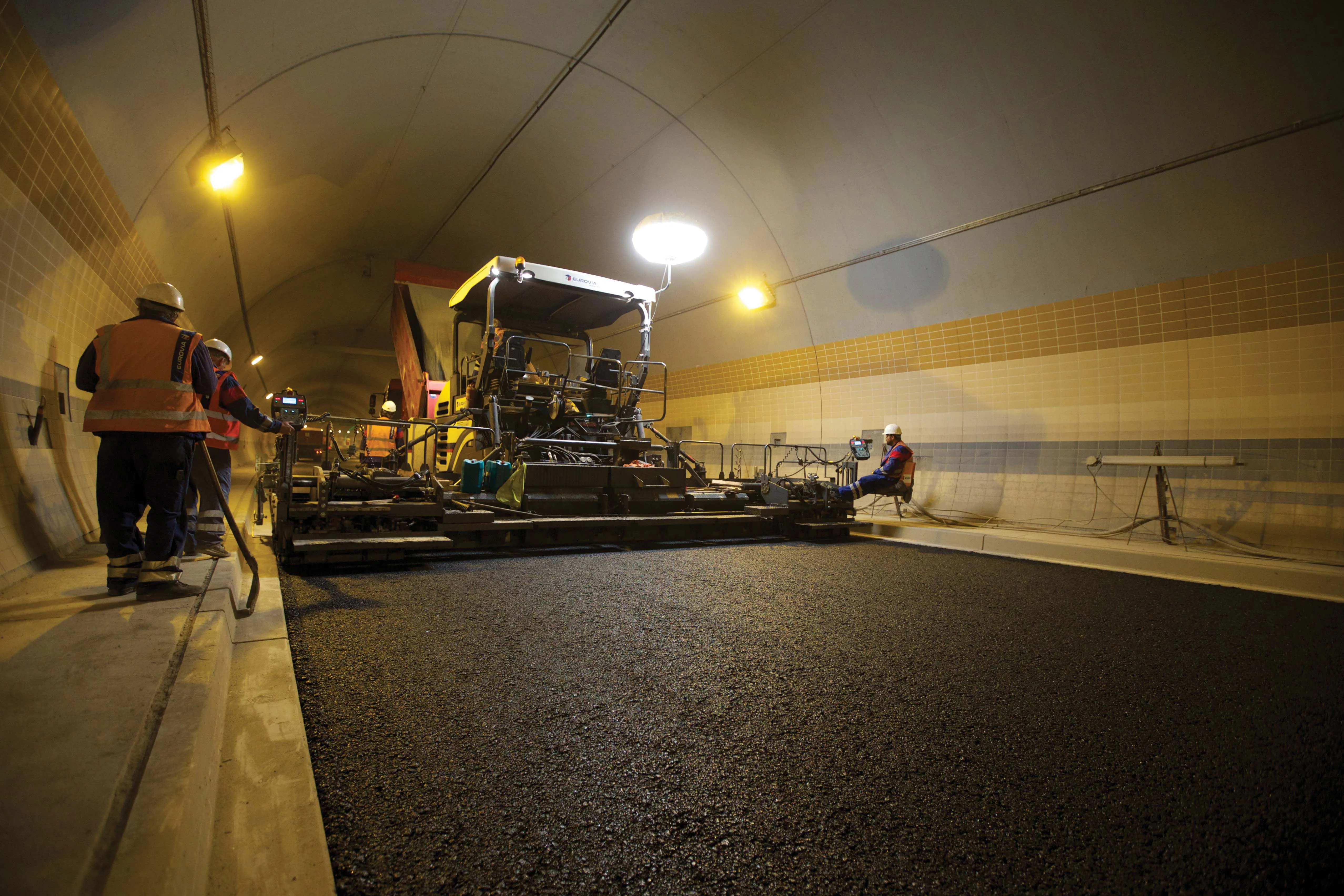
A raft of global pressures is driving developments in the materials and equipment we use for the handling, storage and treatment of bitumen. The goal is to achieve better performance and longer life for less financial outlay, and at the same time overcome the challenges of inconsistent and varying bitumen supplies. Kristina Smith reports.
There’s never been a more exciting time to write about bitumen, with change on almost every front: the sources and therefore the chemical make-up of bitumen is changing, the way it is traded and moved around are changing and the ways we are modifying and using it are changing. And all these things are inter-linked.
For those specialist manufacturers supplying equipment, technologies and additives for bitumen, the challenge is to come up with solutions that accommodate these changes while meeting the needs of the regions they are supplying. Getting more for less is a common theme, with budgets tight in almost every corner of the world.
The pressure to limit environmental impact is there too, though the focus is much broader than just reducing carbon emissions. Decisions are based on economic benefit: how a technology can save the owner money as well as carbon over the life of a road.
Looking around the world, we tend to find the innovators in developing rather than developed countries. “In West Africa, they are going straight from a gravel road to a high-quality paved road in one step, skipping 40 years,” said Anders Marschall-Mouritsen-Mouritsen, CEO of DenimoTech. “They really want to invest in new technology right away.”
In Brazil, too, contractors are also adopting new technologies, although the motivation is somewhat different. Many of the road projects there are being financed through PPP models, with concessionaires developing, maintaining and operating the roads for 25 years.
“Our strongest market is in South America and specifically Brazil,” said Bob Kluttz, senior research scientist at
“There you have a private entity which is much more focussed on the long-term picture, and which is less reluctant to adopt new materials. They have been much quicker to put down trials and then, once the material has been successfully trialled, to move forward onto full projects.”
The new bitumen
The last five years have seen a profound change in the way bitumen is produced and distributed. Bitumen is a by-product of the oil refining process, traditionally the residue left over after all the higher-value lighter fractions such as petroleum gas, petrol and diesel have been distilled out.However, many refineries just aren’t producing bitumen anymore, because oil companies began to demand that they become profitable businesses in their own rights, rather than just a cog in the oil processing wheel. Older, less efficient refineries, particularly in Europe and Australia, have been closed down as new, efficient refineries in Asia start up.
Since 2010, 12 European refineries have shut down with several more under threat of closure or reduced operation. Russia, which has traditionally been Europe’s key supplier of crude oil, is now looking to build a pipeline to China.
Other refineries have been fitted with technologies which allow the residue that would have gone to bitumen to be broken down further to produce more profitable products. Bitumen today may well be a blend of several different feedstocks which means the chemical composition of the bitumen will vary.
Then there is the impact of the US producing its own shale oil and tar sands, and refining to produce bitumen which is then exporting. “The US is refining increasing amounts of shale oil and tar sands in lieu of petroleum. The bitumens produced from these different sources are different as well and we really don’t know their long-term performance characteristics,” warned Kluttz.
As well as question marks over their long-term performance in roads, these bitumens are also travelling much further distances. “We have a situation where production is more centralised in some places, and there are large consumption areas where there are no producers,” said Jonathan Ellisor, global supply manager for Puma Energy.
Puma Energy owns and operates seven bitumen vessels and either owns or leases 16 different bitumen terminals around the world. It recently opened very large terminal in Malaysia, and one in Matilda, Mozambique with a further six due to open in 2015 in Dagenham, UK, Chile and four other locations.
Puma chooses locations close to areas of high demand, at ports which can accommodate the size of ship required. “We are looking to connect the supply points with the demand points. And that requires large vessels and large terminals that can receive them,” said Ellisor.
Bitumen vessels are specialist craft, expensive to construct and operate because they have to continually heat the bitumen. At the other end of the scale, cheap-and- cheerful ways of transporting bitumen have been developed: in bags or blocks from 1tonne right down to 25kg.
“Over the past four to five years we have had a lot of requests from customers, mostly in Africa, who require the equipment to melt the cold bitumen,” said Diego Massenza, director of
Manufacturer Poerner invested in a new form of one-tonne bitumen bag, which it has supplied, together with cooling and packing units to refineries in Iran, Bosnia and Russia. At the other end of the chain are small contractors or asphalt mix suppliers with the melting equipment.
Political forces may also have an impact on the increased use of bitumen blocks. As Iran waits for sanctions to be lifted, much of its bitumen finds its way in blocks to warehouses in the Gulf region to be bought by traders and sold on.
More for less
Many newer bitumen technologies which are gaining traction around the world are touted as beneficial to the environment: warm mixes, mixes containing RAP (recycled asphalt planings) and those using ground tyre rubber. Those successfully adopted make economic sense for the road owner and the contractor, in capital cost terms, although the jury is still out on the whole-life cost efficiency of some ‘environmentally friendly’ solutions.Warm-mix asphalt (WMA) is widely used in the US, encouraged by the Federal Highway Administration (FHWA). WMA mixes require less energy to create them and produce less harmful emissions during manufacture and laying. They are also more suited to long-haul situations and colder climates as they lose heat at a much lower rate than hot mix asphalt (HMA).
In the US, WMA now accounts for over 30% of the total asphalt mixture market (see graph 1), according to the National Asphalt Pavement Association’s (NAPA) fourth annual survey. The main factor behind its meteoric rise in popularity is a system which sees contractors paid a bonus for achieving better compaction.
Companies supplying warm mix technology, such as
NAPA’s survey also maps the rise in the use of RAP in the US, a 21% increase in the amount used between 2009 and 2013. The proportions of RAP used vary but is rising (see graph 2), with many specialist suppliers offering additives which they claim allow for higher and higher percentages to be accommodated.
In 2014, biorefiner
Though waste tyre rubber has been used in pavements for over 50 years, particularly in the US, Australia and South Africa, new technologies may start to increase its uptake. The challenge is to develop solutions which don’t require costly modifications to mixing plants, but which allow the rubber to chemically modify the mix.
There are two ways to use rubber. The ‘dry’ process involves adding granules to the mix and brings limited improvements in performance. The ‘wet’ process sees the ground rubber added to bitumen at around 200° and mixed intensively for around an hour, resulting in a new modified binder with much greater performance improvements.
One recent development combines bitumen, ground tyre rubber (GTR) and mineral filler into pellets which can be used without modification to existing asphalt plants. Developed by
Another solution from Lehigh Industries, which produces micronised rubber powders, and additive specialist Rheopave combines the rubber powder with a polymer blend called X10 which allows the rubber to be suspended evenly through the mix, so that it doesn’t have to be constantly agitated, according to Lehigh.
There is a big challenge, however, linked to the use of any of these ‘new’ materials which we are adding to mixes. Specifications have all been written in relation to traditional, unadulterated bitumen.“There are concerns in the industry around the various materials that are being added to bitumen: whilst they appear to meet the specification properties, there are concerns about whether the roads will have good durability and actually perform as we expected,” said Kluttz.
“No matter how performance-related your specs are, they all have a very much empirical component which has been designed around real bitumen. The more you change bitumen, the less reliable the ‘related’ part of the performance-related becomes. This is very much an issue for all of us.”
The result is that roads are failing sooner than expected. “In the US they are seeing less and less rutting on the roads because they are adding more and more RAP,” said Dr Haleh Azari, manager of the AASHTO Advanced Pavement Research Laboratory (AAPRL) at the National Institute of Standards and Technology (NIST). “On the other hand, roads are failing with fatigue cracking and very early ageing. They try to counter that by adding rejuvenators, but there is often a high variability in the mix leading to spots where the road fails.”
Azari, with Dr Alaeddin Mohseni, president of Pavement Systems, is developing a suite of new tests which can determine the performance of mixes containing materials such as RAP, RAS, warm mix additives and ground tyre rubber. “The problem is that the current tests cannot determine the performance of new materials,” said Azari.
Pavement preservation
In June 2014, 27 roads in the South-Western county of Devon in the UK were closed by the local authorities. The signs placed by the roadsides read: “Danger. Road is unsafe to travel on due to the road surface condition”. The closures in Devon are an extreme illustration of the budget difficulties and decisions that many road authorities around the world, are facing. The graph (see graph 3) illustrates starkly how road budgets in Europe have declined over the past seven years.
“This isn’t only a problem for Europe, the lack of funds is everywhere,” said Etienne Le Bouteiller, technical and development manager at
In the US, the pattern of underfunding and deterioration is the same. “The construction of our US interstate highway system was completed in the 1980s. Since that time, the lane miles have increased by around 10% while traffic has increased by over 200%.
Our roads are falling apart, not because we are doing a bad job but because we are putting a lot more traffic on them,” said Kluttz.
Meanwhile, the US’s gasoline tax has not increased since 1993 while the loading on the roads has increased. “Effectively funding is going down while the need is going up,” said Kluttz.
Road owners must take a more pro-active approach, urges Le Bouteiller, developing long-term strategies, known as pavement management systems. Le Bouteiller cites the UK, South Africa and Australia as countries which already have pavement management systems in place; elsewhere the practice is less developed, he said.
The principle of a pavement management system is applying the right treatment to the right road at the right time. In simple terms, the longer you leave a road untreated, the more expensive any work will get (see graph 4).
In the US, there has been an increasing focus on preservation strategies over the past five years. “It is still a work in progress,” said Kluttz. “There are many, many types of treatment, they all have varying costs and their relative costs vary from one place to another. There is no fixed answer for everybody.”
Kraton is one of several companies involved in a trial at the National Center for Asphalt Technology (NCAT) in Alabama which is looking to define how much extra time a variety of treatments can give a road. Kraton’s 4.75mm HiMA thin overlay is being put through its paces on one of 25 sections, with results from the first cycle of trials expected in March 2015 at NCAT’s Track Conference.
Hand-in-hand with more sophisticated management programmes must come more sophisticated treatments, said Le Bouteiller: “We need to improve the existing technologies that we have.”
Using polymers is one such solution. In the UK, where chip seal –bitumen emulsion sprayed onto the road followed by chips of rock – always includes polymer modified bitumen, surfaces do last longer. “I converted the last county [to polymer modified bitumen] three years ago,” said Steve Waller, sales manager for
Le Bouteiller highlights other new technologies aimed to extend the life of a surface treatment such as fibres added to chip seal and microsurfacing layers and fog seal containing fine fractions in the bitumen emulsion. However, more sophisticated technologies depend on the quality and consistency of materials used, warned Bouteiller: “When you want to make a good cake, you need to use good ingredients,” he says. “Just because bitumen meets the specification does not mean that it is suitable: there’s a difference between conformity and suitability.”
A question of consistency
One of the biggest challenges facing asphalt mix producers, contractors and ultimately road owners is the variability of bitumen out there on the global market. Buying bitumen which appears to meet the specifications, but which could have come from almost anywhere in the world, is introducing new risks.Large price differentials between different areas have tempted a new group of bitumen traders onto the scene. Some of these are simply entrepreneurs looking to exploit a possible opportunity with no specialist knowledge.
Bitumen is now almost being traded as a commodity with bitumen hedging, offered by firms such as Global Risk Management becoming more widespread, particularly in Europe, Southern and Northern Africa.
As an antidote to this situation comes a new breed of bitumen specialist. One is
Another is
The first of these is already operational in Bolivia, with others, which will operate on a franchise model, planned for Mongolia, Ghana and Indonesia. “These are countries with attractive growth rates but whose economies are too small for the huge oil conglomerates,” said Marschall-Mouritsen whose company
Marschall-Mouritsen believes that this form of total technology solution, is the way forward. Once a colloidal mill specialist, Denimotech has vastly expanded the range of equipment it offers over the past three years, as well as opening manufacturing bases outside its native Denmark, with plans for more.
The strongest message to emerge as a result of all these changes is that bitumen is not just bitumen. The traditional model for the supply and consumption of bitumen, where the asphalt mix producer receives a steady supply from its nearest refinery is gone.
New models must take into account the variability of bitumen on the world stage, must understand the differences in bitumen and what works best where, depending on pavement designs and specifications, and must have the flexibility to process and treat bitumen accordingly. Exciting times indeed. RSS








